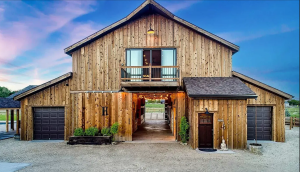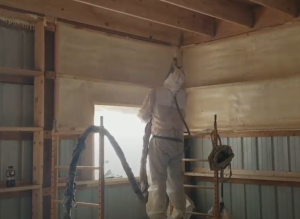My Response: Why We Need Building Codes
As promised, here is my response to the Coeur d’Alene Press article of December 5, 2017 (exactly as I wrote in the comments portion following the newspaper article regarding adoption of building codes):
 I will first qualify myself – I attended the University of Idaho in architecture. I was a manager or owner in the prefabricated wood truss business for over 20 years. I’ve been a registered general contractor in four states, In 1987 I joined ICBO (they write the Codes) as well as ASAE (American Society of Agricultural Engineers) and was a sitting member on the committees which established the huge majority of the structural design criteria for post frame (pole) buildings. I have had the privilege of being involved in the structural design of nearly 20,000 buildings in every U.S. state. I am a contributing writer for Rural Builder magazine.
I will first qualify myself – I attended the University of Idaho in architecture. I was a manager or owner in the prefabricated wood truss business for over 20 years. I’ve been a registered general contractor in four states, In 1987 I joined ICBO (they write the Codes) as well as ASAE (American Society of Agricultural Engineers) and was a sitting member on the committees which established the huge majority of the structural design criteria for post frame (pole) buildings. I have had the privilege of being involved in the structural design of nearly 20,000 buildings in every U.S. state. I am a contributing writer for Rural Builder magazine.
In my humble opinion – anyone who wants to “run bare” without Building Code minimum standards being applied to their new structures is out of their freaking mind.
The Building Codes are designed specifically to protect the safety and lives of those who occupy (or are in the vicinity of) structures. The Code requirements are ‘minimum’ standards, which are just scraping by – however something is better than nothing. For residential occupancies, the risk (under Code) is a once in every 50 year probability of the design loads for a given home to be exceeded! And yet there are some who would do away with even this minimal amount of protection.
I am not at all an advocate of governmental intervention, however only a fool acts as their own engineer. I deal, on a daily basis, with challenges posed from new building owners who have had under designed buildings constructed in jurisdictions which do not require structural plan reviews.
Mr. Tyler’s concern about homes having been built on unstable ground is not the fault of the Code, but the fault of the agencies which issued the permits. A geotechnical study should be done for the proposed site of any new structure – this allows the RDP (Registered Design Professional – architect or engineer) who designs the structure to have adequate information to be able to properly address foundation challenges, before they become foundation issues. The Code does not mandate engineered soils reports.
As to length of warranty provided by builders – an educated new building owner will look for a builder who offers an extended warranty. This, again, is not a function of the Code.
Having accurate information about snow loads is crucial to proper structural design. The 2015 edition of Ground Snow Loads for Idaho was produced by the Department of Civil Engineering at the University of Idaho. Based upon 31 more years of snowfall study than the previously used document – it appears Ground Snow Loads in Kootenai County should range from 43 to 100 psf (pounds per square foot) depending upon one’s location within the county.

Several factors go into calculation of Ps (sloped roof snow load) from Pg (ground snow load) including exposure to wind, is structure heated or not, importance of building, slope of roof and roofing material. In many instances the calculated Ps load is going to be higher than the currently accepted 40 psf. Will this add to construction costs? Yes. Will it help prevent failures and possible loss of life? Yes.
What is the value of even a single life?
Rather than throwing the baby out with the bath water, my advice is to require every single building to be designed per current Code to include plans which are sealed by a Registered Design Professional.









You commented on an article in the Coeur d’ Alene Press regarding Kootenai County building codes. FYI, the untold side of the bureaucracy story; https://www.kcgov.us/files/commissioners/draftbuildingcode/Option2PositionPaperv2.pdf Thank you, Marc Eberlein
In my humble opinion, the problem is not with the Code itself, the problem is with Building Officials who turn a blind eye to the actual climactic conditions within their own jurisdiction. Throwing the baby out with the bathwater is not the solution to the problem, the county commissioners have the authority to mandate to the Building Department to better utilize the data at hand.